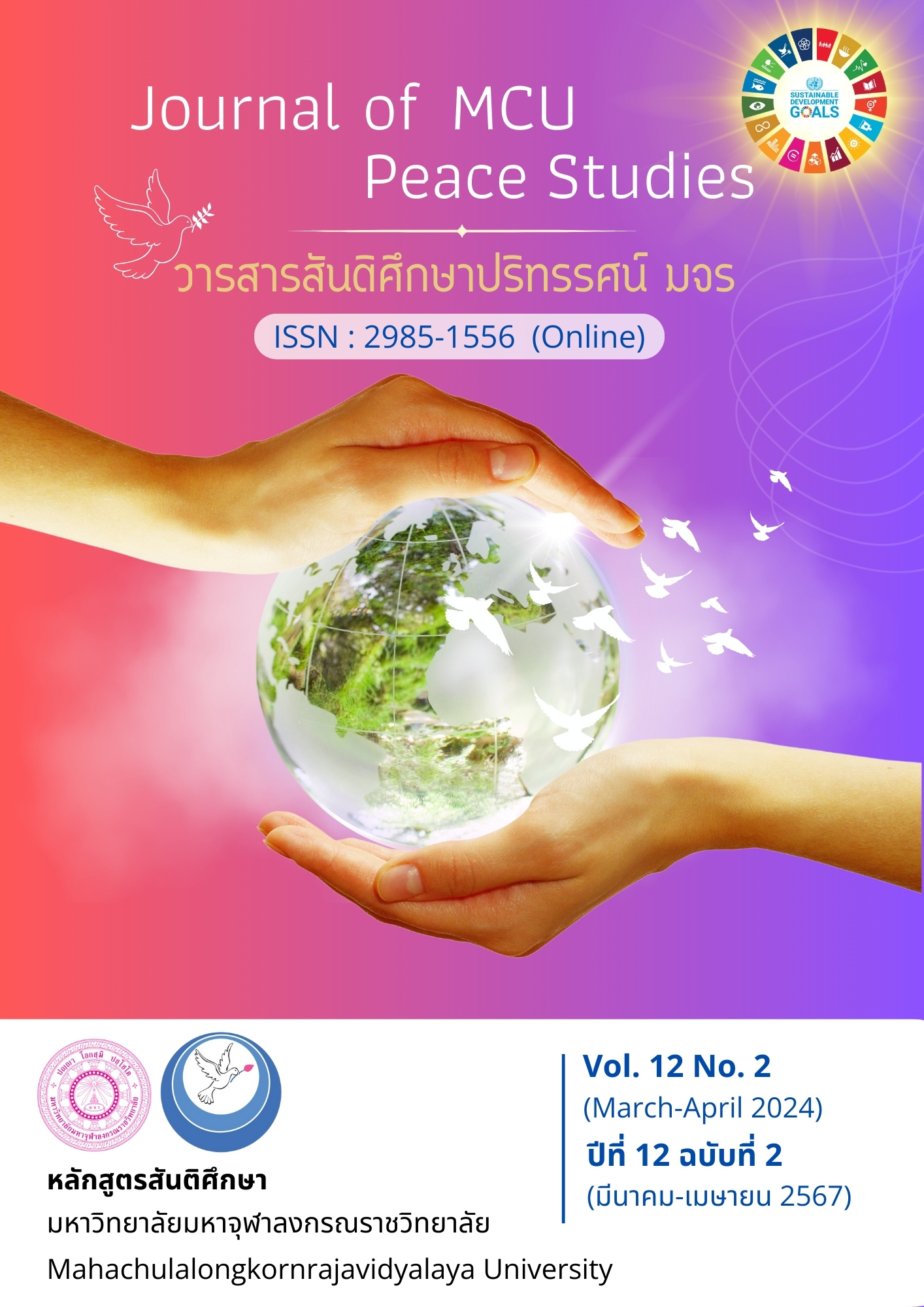The Economic Development Strategies of Sekong Province, Lao People’s Democratic Republic
Main Article Content
Abstract
The research article consisted of the following objectives: 1) to investigate the economic development conditions of Sekong Province in Lao PDR; 2) to develop the economic development strategies of Sekong Province in Lao PDR; and 3) to evaluate the economic development strategies conditions of Sekong Province in Lao PDR. The target group was divided into three phases, which included: 1) 70 administrative officials from the economic department who were involved in the formulation of economic policies for Sekong Province in Lao PDR; 2) 12 experts, including 4 administrative officials, 4 scholars, and 4 staff representatives; and 3) 20 experts for the evaluation of economic development strategies of Sekong Province in Lao PDR. The instruments used for the study were a questionnaire, an interview form, and a focus group discussion form. The statistics used were percentage, mean, standard deviation, and content analysis.
From the study, the following results were found: the aspect of economic development conditions with the highest level of mean was internal environment, while the aspect with the lowest level of mean was the operation results according to the Economic and Social Development Plan. There are 7 strategies economic development for Sekong Province in Lao PDR: 1) Developing subsistence agriculture into an export industry; 2) Developing Sekong Province into a province of foreign direct investment (FDI); 3) Promoting industrial processing into goods for domestic consumption and export; 4) Promoting Sekong Province as "tourism for all" province; 5) Transforming Sekong Province from a "land lock" to a "lank link"; 6) Budget protection, with an emphasis on efficiency and effectiveness; and 7) Maintaining a balanced environment and reducing the risk of natural disasters. From evaluting the economic development strategies conditions of Sekong Province in Lao PDR by experts, the strategies are of feasibility, propriety, and utility at the highest level.
Article Details

This work is licensed under a Creative Commons Attribution-NonCommercial-NoDerivatives 4.0 International License.
Views and opinions expressed in the articles published by The Journal of MCU Peace Studies, are of responsibility by such authors but not the editors and do not necessarily reflect those of the editors.
References
Basile, R. (2001). Export Behaviour of Italian Manufacturing Firms Over the Nineties: The Role of Innovation. Research Policy, 30(8), 1185-1201.
Boonyapongchai, S. (2019). The Study of Thailand’s Economic Growth by Private Investment. Academic Journal Bangkokthonburi University, 8(1), 209-219.
Bulakul, C. (2013). Understand the Way of "Green Agriculture" Through Tourism at Farm Chokchai. Journal of Business, Innovation and Sustainability, 8(1), 14-16.
Charoenpananyaying, S., & Dachparot, T. (2018). The potential of Ubon Ratchathani Province Border Trade and Transport to Tune the Country into AEC. Retrieved May 3, 2023, from http://www.cuti.chula.ac.th/wp-content/uploads/2020/07/ubol.pdf
Duangyam, T. (2012). The Process of Strengthening the Pong Nam Ron Farmers Group that Received the National Outstanding Farmer Award in 2019, Fang District, Chiang Mai Province. (Master's Thesis). Chiang Mai University. Chiang Mai.
Hatthakam, R. et al. (2012). Gross Happiness Components and Indicators Development of Community Based Tourism Management. Interdisciplinary Management Journal, 1(1), 99-108.
Kotler, P. (1997). Marketing Management: Analysis, Planning, Implementation and Control. (5th ed.). Englewood Cliffs, NJ: Prentice Hall.
Kulavijit, B. (2017). Personal Media and Agriculture 4.0 Promotion. Veridian E-Journal, Silpakorn University, 10(3), 2440-2454.
Maneechoti, S., & Athinuwat, D. (2019). Success Impacts on Organic Farming in Small Farmer Community in Nakhon Sawan Province. Thai Journal of Science and Technology, 8(6), 596-608.
Ministry of Planning and Investment. (2021). According to the 9th National Economic and Social Development Plan. (2021-2025). Bangkok: Lao People's Democratic Republic: Planning and Investment Department.
Ratchakot, K. (2009). Politics and Governance of Thailand. Bangkok: Saha Thammik.
Sangkhasuk, R., Naklungka, K., Ekaphon, W., & Surasawadee, W. (2017). Development of E-commerce Channel among Community Enterprises Network. Phranakhon Rajabhat Research Journal (Humanities and Social Sciences), 12(1), 38-49.
Srathongpang, P., Si-niang, P., Khammanee, K., & Thang-ngern, J. (2018). Consumer Behavior in Buying Organic Products in Sukjai Market, Sampran District, Nakhon Pathom Province. Journal of Science and Technology, Ubon Ratchathani University, 20(2), 185-192.
Thalerngpol, R. (2014) The Strategic Development in Human Resource Management of the State Railway of Thailand. (Master's Thesis) Silpakorn University. Bangkok.
Thitiphattra, K., & Kunphoommarl, M. (2010). Public Participation in Community Based Disaster Management Case Study: Tambon Chompoo, Amphur Muang, Phitsanulok Province. Retrieved April 6, 2023, from http://www.social.nu.ac.th/th/IS2553.php
Zhou, K. Z., & Li, C. B. (2010) . How Strategic Orientations Influence the Building of Dynamic Capability in Emerging Economies. Journal of Business Research, 63, 224-231.

